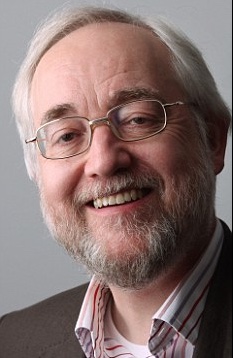 Returning to Umiko Wada after her first appearance in The Fine Art of Invisible Detection was a real pleasure, even though Wada herself would be baffled by anyone taking pleasure in her company. She much prefers her own company given a choice and draws considerable satisfaction from her self-sufficiency.
Returning to Umiko Wada after her first appearance in The Fine Art of Invisible Detection was a real pleasure, even though Wada herself would be baffled by anyone taking pleasure in her company. She much prefers her own company given a choice and draws considerable satisfaction from her self-sufficiency.
It may seem odd that I can happily inhabit the persona and world view of a solitary middle-aged Japanese woman working as a private detective of very particular gifts in Tokyo and I’m not sure I can explain it myself, but I always feel it’s a happy fit. After all, apart from feeding her cases to investigate and narrating what comes of them, I leave her essentially to her own devices, which is exactly how she likes it.
In this new book, The Fine Art of Uncanny Prediction, we’re very much on Wada’s home turf in Tokyo 2022. This means we get to see more of her domestic life along with her professional challenges. She lives in a one-person apartment (tiny by European standards, efficiently compact by Wada’s), although she spends almost as much time in the office she inherited from her late boss, Kazuto Kodaka, which is actually considerably larger.
Her mother, who appeared only fleetingly in the first book, has a larger role to play this time. She and Wada enjoy a somewhat fraught relationship and it’s about to become more fraught still when Mother takes in a lodger Wada disapproves of and then decides she needs the services of a private detective. What is the use of having a daughter who is a private detective - especially when she has failed in what Mother sees as her primary duty of producing grandchildren - if you can’t hire her to clear your lodger’s besmirched reputation
Naturally, Wada disagrees, claiming she has more than enough on already. And this is certainly true, since what should be a straightforward missing person case is meanwhile spiralling into a myriad of hazards and complexities. It turns out to be connected to an investigation carried out by Kodaka more than twenty years previously in ways she only slowly comes to understand.
The reader will be ahead of her there, however, because this element in the story gives us the chance to spend time with Kodaka when he was plying his gumshoe trade without Wada’s assistance. He too appeared only fleetingly in the first book and it felt really good to encounter him in earlier years, when he was in what passed for his prime, grappling with a mystery that activates a conscience he would normally have denied possessing.
His journalist friend, Joji Funaki, is a link between the two time frames, helping first Kodaka and much later Wada to trace a path through many dangers towards a resolution. Wada begins to suspect he isn’t telling her everything he knows and she’s right, though, as she eventually discovers, there are good reasons for that.
And what might those reasons be? How is a missing person case in 2022 connected to a case of suspected blackmail in 1995? Obviously, I’m not going to reveal that. What I can do is point you towards the significance of the title. In a country whose inhabitants have always lived with the knowledge that a serious earthquake is a certainty about which the only unknowns are when and where it will happen, the possibility that there may be someone who can actually predict such events - a so-called earthquake sensitive - is likely to attract a lot of attention, even though of course no-one believes anyone can accurately predict a random natural phenomenon like an earthquake. If they could, they would surely have warned those living on the north-east coast of Japan of the earthquake and ensuing tsunami that would devastate their lives in March 2011, wouldn’t they?
But what if they did give such a warning? And what if the warning wasn’t acted on by the officials it reached? What then?
Why then we have one of the principal strands in this particularly tangled plot, which reaches back for its source to another disaster visited upon Japan, though this one - defeat in the Second World War - was entirely manmade. A resourceful survivor of the carpet-bombing of Tokyo in 1945, Goro Rinzaki, is determined to carve success and prosperity for himself out of the ashes of national subjugation and his path is destined to cross those of Kodaka and Wada as the years unfold.
How - and with what fateful consequences - is the story of The Fine Art of Uncanny Prediction.
Bantam
RRP: £20.00
Released: August 17, 2023
Hbk

Our review can be read here
And for The Fine Art of Invisible Detection